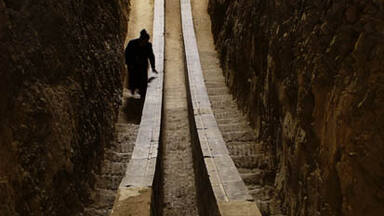L’OREAL-UNESCO Awards 2009 "For Women in Science" - Professor Beatriz Barbuy - Laureate 2009 for Latin America
"For her work on the evolution of the stars from the birth of the universe to the present time." (Jury Citation, General Public)
"For her work on the chemical composition of old stars and its relevance to the formation and evolution of galaxies." (Jury Citation, Scientific Public)
Who She Is
Professor Barbuy was born in Brazil, and received her doctorate degree from the University of Paris in 1982. She is currently a Full Professor at the Institute of Astronomy, Geophysics and Atmospheric Sciences at the University of São Paulo in Brazil.
Throughout her career, Professor Barbuy has held numerous influential scientific posts in both her home country and abroad, including President of the Sociedade Astronômica Brasileira (1992-1994) and Brazilian Representative for the National Science Foundation's Gemini Project (1998-2002) through the Association of Universities for Research in Astronomy. Over past five years, in particular, Professor Barbuy has emerged as an international leader in her field; she has been awarded Brazil's Order Nacional do Mérioto Científico (2005), and has been elected as a member of the French Academy of Science (2005) and the Academy of Sciences for the Developing World (TWAS, 2007).
As the Vice President of the International Astronomical Union, Professor Barbuy has worked with UNESCO and the UN to establish 2009 as the official "International Year of Astronomy". She is also the co-chair of the triennial General Assembly of the International Astronomical Union, to be held in Rio de Janeiro in 2009.
What She Does
Beatriz Barbuy is an eminent astrophysicist who has made a major contribution to the study of the evolution of the chemical composition of the stars. She was the first to demonstrate that metal-poor stars in the galactic halo have an overabundance of oxygen relative to iron, and she is interested in the implications of galaxy formation.
What That Means...
Studying the metals in stars gives astronomers information about their history. In astronomy, unlike in chemistry, the term "metals" refers to any element heavier than hydrogen or helium, which were the only two elements produced in abundance during the formation of the first generation of stars (the Big Bang). All of the heavier elements ("metals") were subsequently produced by nuclear fusions, and with each new generation of stars, their "metallicity" increases. Thus, by determining the "metallicity" of a star, Professor Barbuy can also determine its approximate age, and shed light on the formation of the Milky Way.
This kind of research is a key to understanding the first stars in the universe, and to bringing important conclusions to questions of galaxy formation and evolution studies. Astronomers use spectroscopy to separate light from the stars into wavelength spectra. Professor Barbuy is an expert in both observational astronomy and the interpretation of spectroscopic data, and has studied many different samples of stars using several telescopes, including the Hubble Space Telescope and the Very Large Telescope of the European Southern Observatory in Chile.
Professor Barbuy's research has allowed her to calculate a large library of theoretical spectra that can be combined with libraries of observed spectra, including spectra for 1,000 stars recently collected at the Very Large Telescope (VLT) project, which is extremely useful to other astronomers in her field. Moreover, in her capacity as the Vice-President of the International Astronomical Union, Professor Barbuy has actively promoted the role of science in society. Her leadership within the international scientific community is exemplary, and reflects her eminence as a researcher, teacher, and leader.
